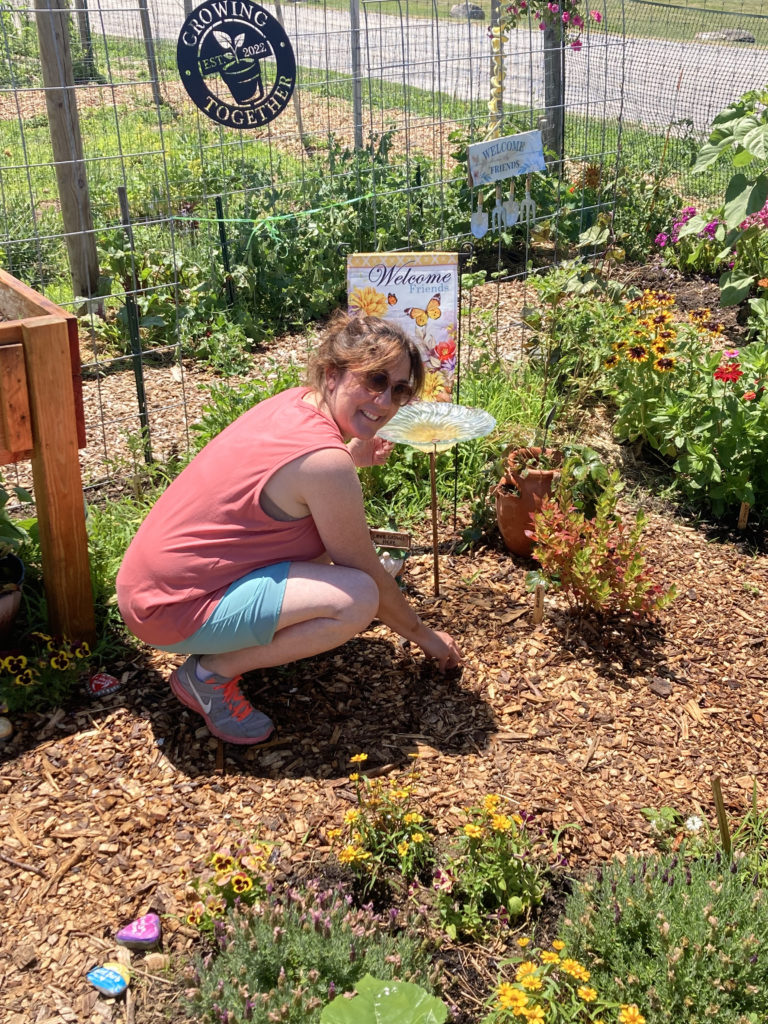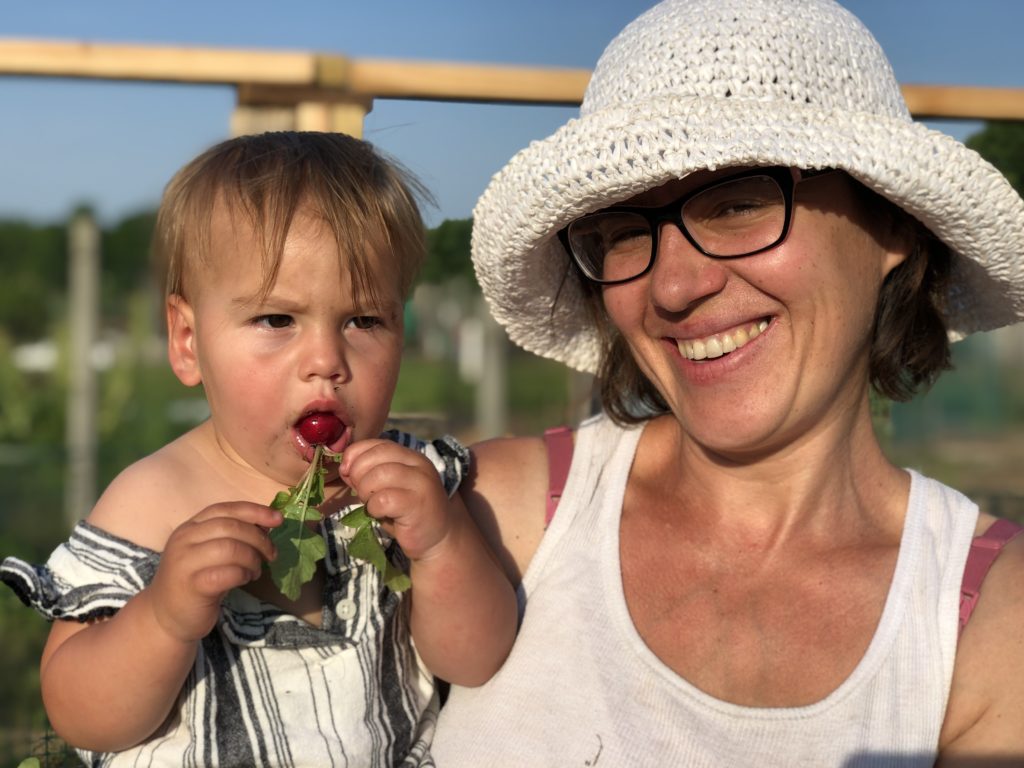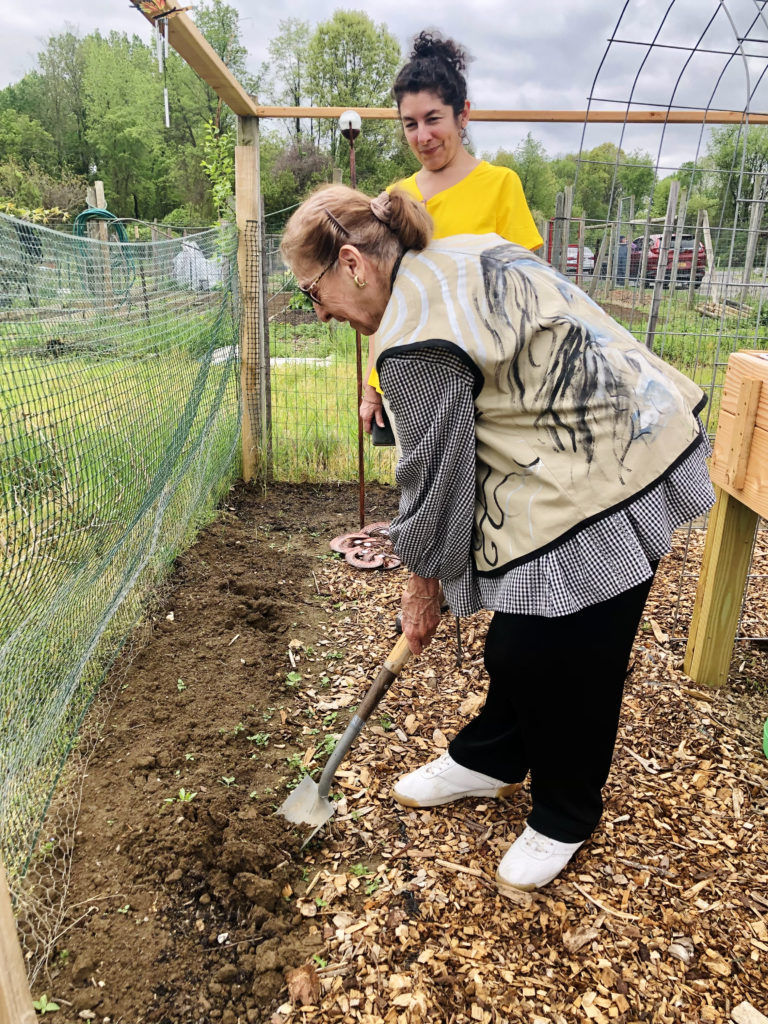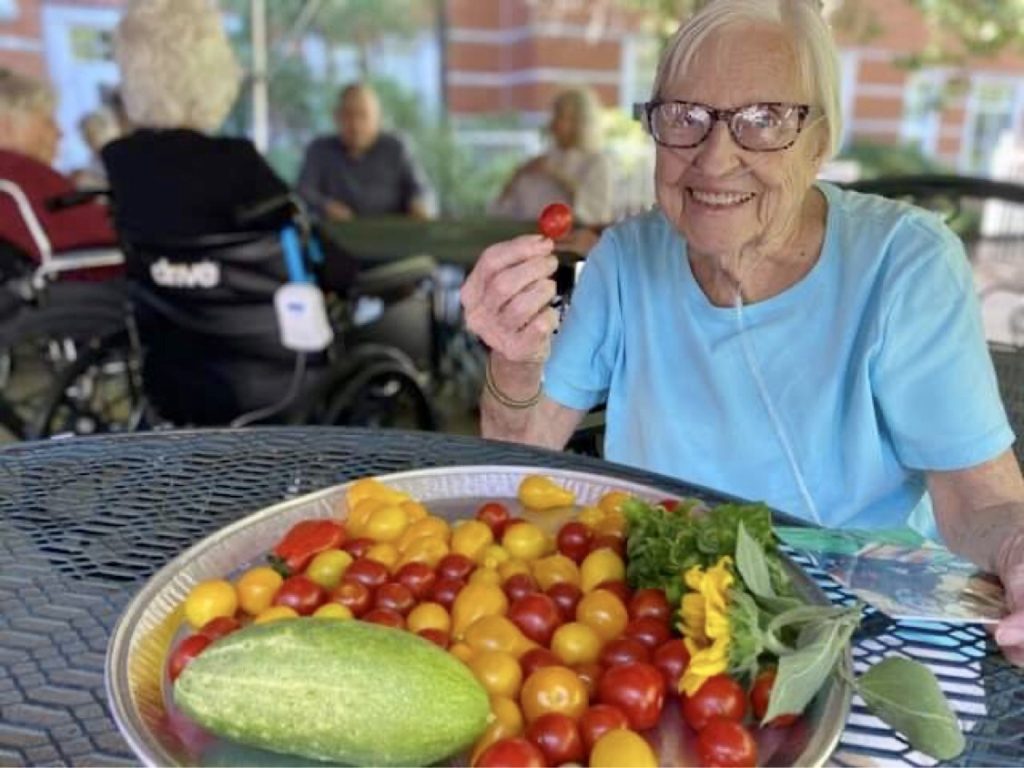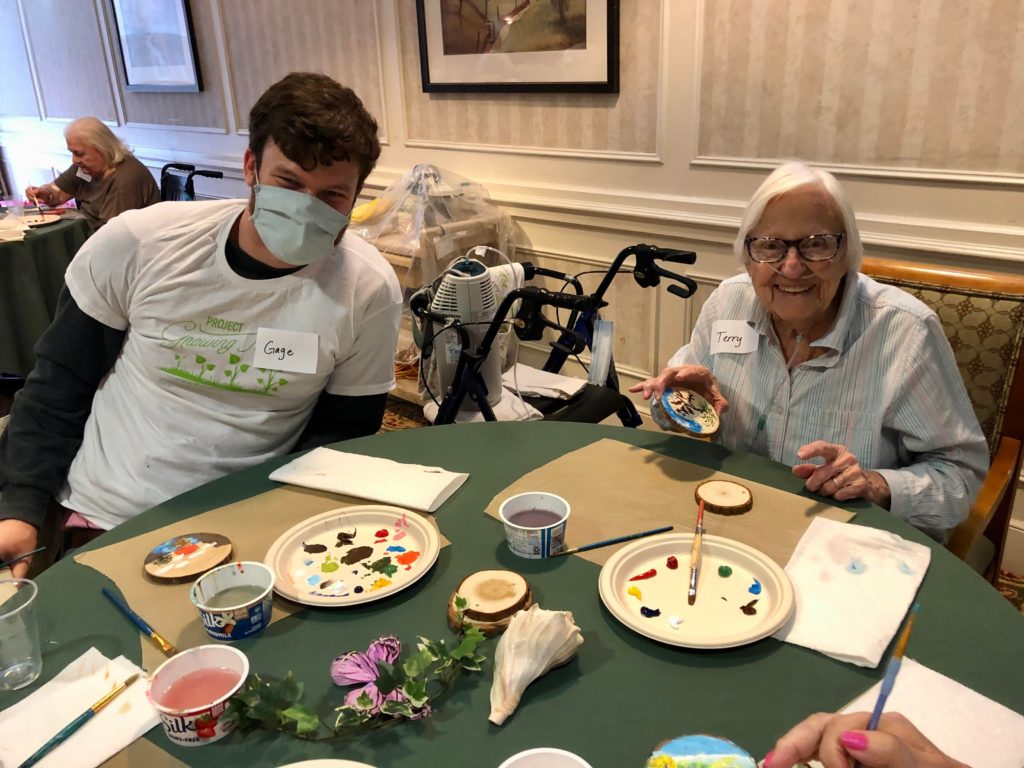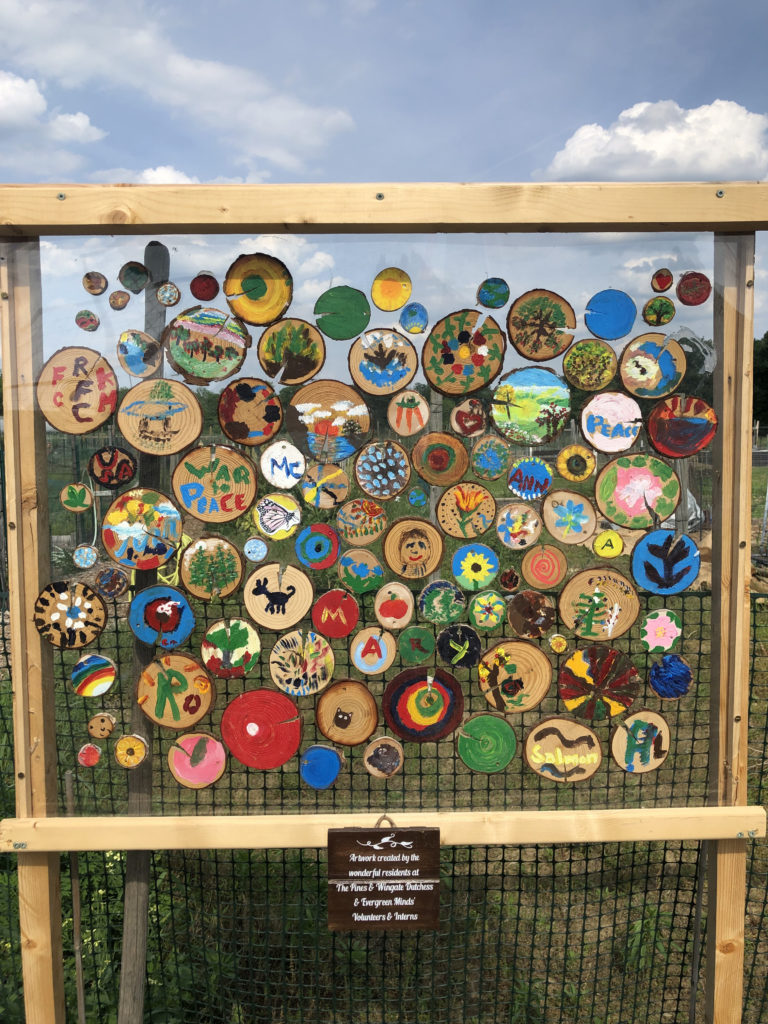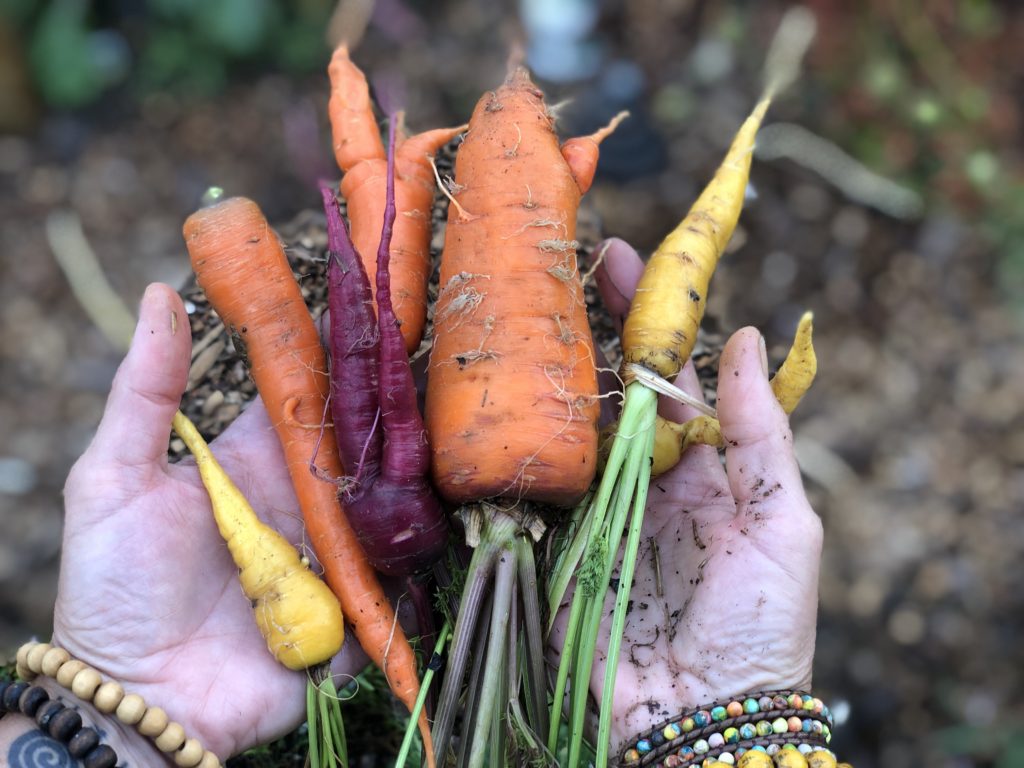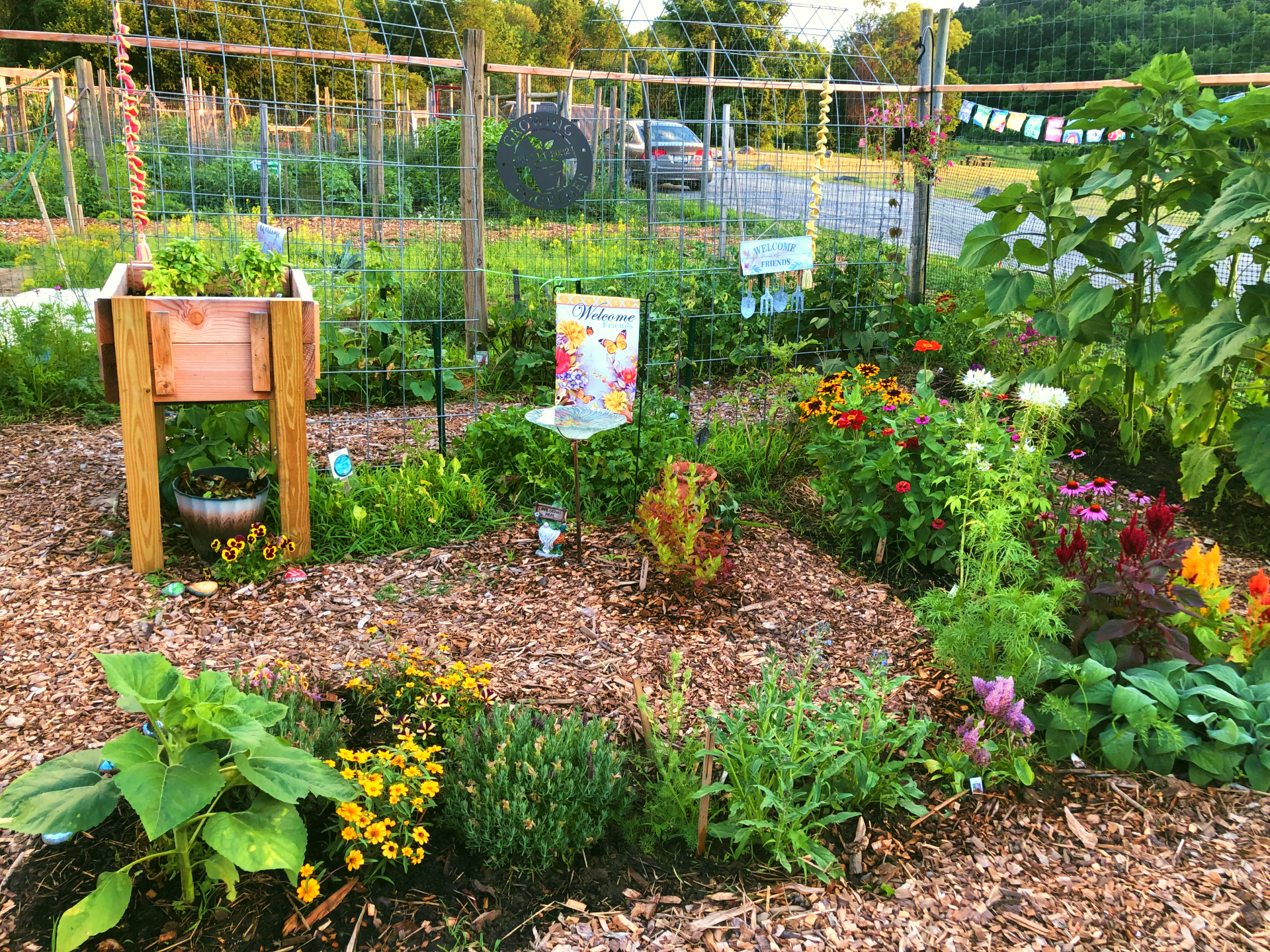Ways to Get Involved

This beauty-FULL inter-generational and dementia-inclusive community garden project is proudly starting it’s second year! This organic and sustainable garden is also a colorful, creative art space which displays artwork created by senior living residents along with Project Growing Together interns and volunteers. The produce and flowers are harvested and given back to senior living communities, so they can continue to enjoy the bounty in their cooking and sensory programming!
From the goldfinch who stops by to feast on our sunflower seeds, to the Tiger Swallowtail butterfly sipping our vibrant zinnias, to the little blue bird who dips in the bird bath on a hot July day—This garden IS LIFE. The diverse people who lovingly tend this garden, have the opportunity to tune into their senses, connect to this land, and feel a continued sense of purpose and contribution to our community.
Project Growing Together includes: Students in the Community-engaged learning (CEL) program at Vassar College, volunteers from the Lifelong Learning Institute at Vassar College as well as community members of all ages and abilities and residents living in senior living communities. We are on a mission to help eradicate ageism and end the stigma and negative narrative so often associated with dementia through education and experiences of bringing people of all ages and abilities together—We are GROWING together.
ALL are welcome here. We welcome and encourage volunteers who are living with dementia and those who aren’t. You will be able to share your skills and interests to help with the many tasks needed to help GROW this community garden. Don’t like to get your hands dirty? Not to worry! Please reach out to explore what interests you have so that we can connect you with one of our many needed roles. Tax-deductible donations are always gratefully accepted!
We have so many exciting seeds being nourished and look forward to bringing people together with purpose and meaning in & with nature!
Click here to read the Project Rationale (.pdf)
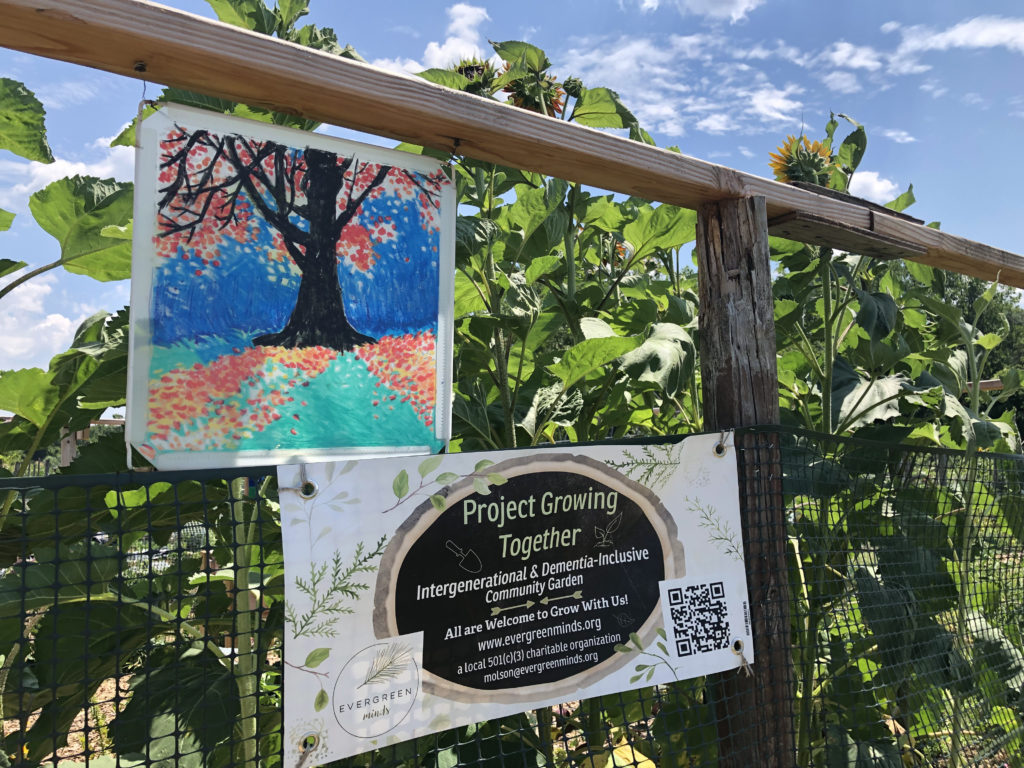
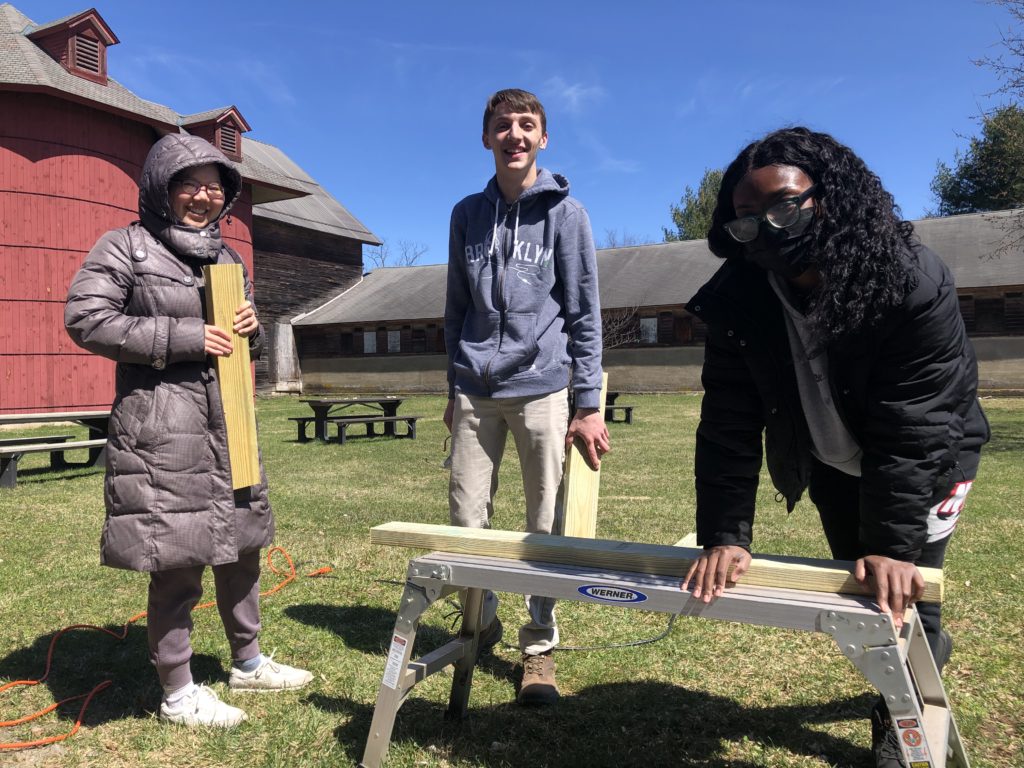
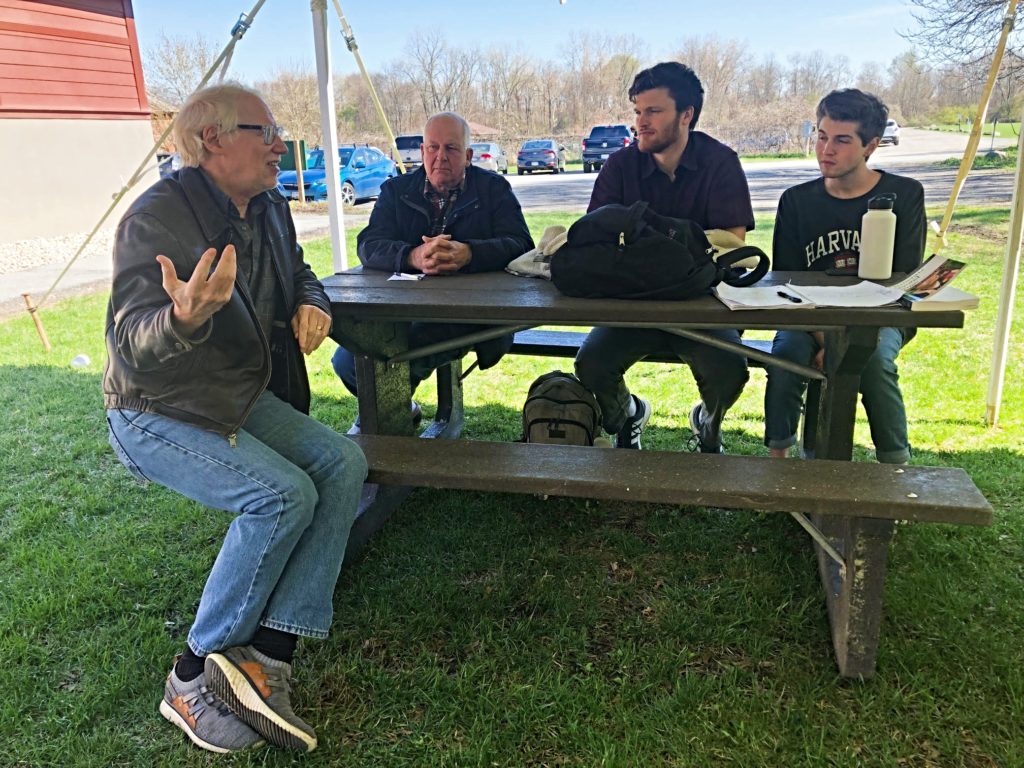
Interns & Volunteers about Dementia Care


